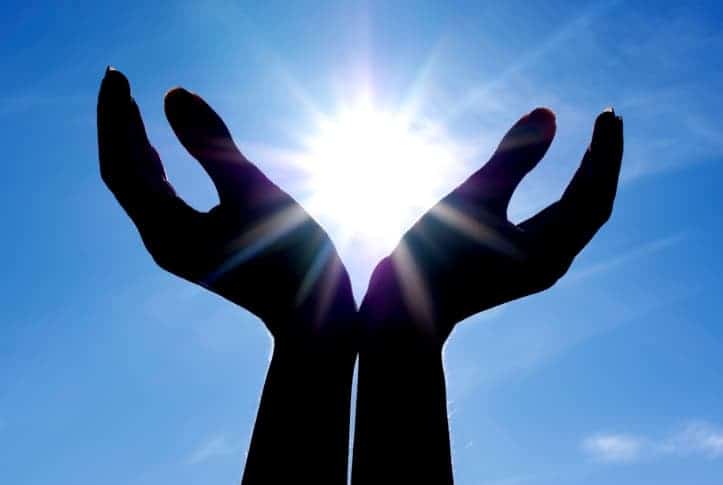We have frequently spoken to people who talk about the immediate sense of warmth and welcome they felt the first time they walked into a 12 Step meeting. And we’ve heard this even from people who have never struggled with substance abuse issues.
What is it in these rooms that is so immediately attractive? Why would there be anything appealing about people assembled to overcome a fatal, chronic, and progressive disease?
Exuding from a healthy recovery community, there seems to be a sense of joyful acceptance of life as it is. If a visitor or newcomer were able to put it into words it would likely be something along the lines of: You can let down your guard here. You are safe here. You don’t have to compete or impress anyone.
People that walk into these rooms and feel this are picking up on something real. Here are a group of people who see the world in a unique light. They have learned to see into a deeper reality beyond mere survival. They have tapped into the energy of gratitude rather than competition. They know that they already have what they need.
The Neuroscience of Negativity
This energy of gratitude is unique because neuroscience actually shows that human beings are wired to drift in the opposite direction. Extensive studies in neuroscience have demonstrated that we have a biological tendency to see things in a negative light, commonly referred to as the “negativity bias.”
For the purposes of continuing the survival of our species, our brains are naturally wired to hold on tightly to frightening experiences from our past to try to avoid repeating them and to scan the horizon for any future threats. Without any sort of corrective action, we drift naturally toward seeing these negative memories and possibilities, rather than remembering the positive experiences or seeking out possible positive outcomes. Studies have shown that this negativity bias develops even in infancy.
It makes sense that this negativity bias would have benefits for our survival, particularly when you think of our ancestors, who, unaided by the technological advances we take for granted, lived much more exposed to the elements and were more vulnerable to threats by predators.
With this negativity bias wired into us, left on our own, without some sort of active reorientation, we will end up focusing on the hostile and scary possibilities for our lives, while missing key parts of the picture.
The Lens of Gratitude
When discussing the therapeutic benefits of a gratitude practice, psychologists Phil Stutz and Barry Michels articulate it in the following way in their book The Tools:
“What if, on a level we can’t see, the universe is interested in our welfare, supporting us in ways large and small? It’s not that much of a stretch to be able to perceive this. Start with your physical body. It extracts oxygen from the air, it digests complex foods, it allows you the miracle of sight and hearing. All these things work amazingly well without your even understanding how.”
All of these helpful processes—breathing, digestion, sight, and hearing—are taking place whether we notice them or not. Gratitude is what allows us to appreciate this. It is not about generating a false narrative of naive optimism for things that are not there. It is a way of perceiving the world in a more complete light.
Stutz and Michels go on to state that gratitude isn’t just an activity, it is a means of perception. “With practice, you’ll find that gratefulness perceives the spiritual world just as clearly as your eyes and ears perceive the physical world.”
The 12 Steps walk people through the process of being able to see the world through the lens of gratitude. As a result, laughter, joy, and connection become the natural companions of an active and healthy recovery community.
The Steps undo the burdensome myth of individual self-sufficiency and having to fight our way through a world that is out to get us. Rather, the person in active recovery learns to see through the eyes of gratitude. They can begin to see all the small and large ways that they have been taken care of all along. The gifts that they begin to appreciate are often not anything new, but in active recovery people now have the ability to see what was always there.
Gratitude is a key to access the benevolent forces at work around us that we are often unable to see without it.
A Different Universe
When a new person walks into a room full of people who are committed to this vision of the world, the effect can be powerful. It can even be powerful enough to convince him or her to go through the ego-deflating process of the 12 Steps. And in that process, he or she gains the ability to see all the ways that the universe is on their side as well.
There is something about working the 12 Steps that gives people the ability to see the world in this way. It allows people to gain access to a more complete picture that includes the less obvious ways that life is working in our favor, rather than only seeing our problems.
Bill Wilson articulated this perception of a new world in a piece of beautiful writing at the conclusion of Step 11 in Twelve Steps and Twelve Traditions.
“Perhaps one of the greatest rewards of meditation and prayer is the sense of belonging that comes to us. We no longer live in a completely hostile world. We are no longer lost and frightened and purposeless. The moment we catch even a glimpse of God’s will, the moment we begin to see truth, justice, and love as the real and eternal things in life, we are no longer deeply disturbed by all the seeming evidence to the contrary that surrounds us in purely human affairs. We know that God lovingly watches over us. We know that when we turn to Him, all will be well with us, here and hereafter.”
Having worked through the steps, the individual finds a way to access a connection with a Higher Power. Entering into prayer and meditation, he or she is able to see with the eyes of gratitude.
The primary difference between a hostile universe and a benevolent one is whether or not we have access to the power of gratitude.
Sources:
Amrisha Vaish, Tobias Grossmann, and Amanda Woodward, “Not All Emotions Are Created Equal: The Negativity Bias in Social-Emotional Development,” Psychological Bulletin, 134(3) (May 2008): 383-403.
“Step Eleven.” Twelve Steps and Twelve Tradition, 96-105. New York: Alcoholics Anonymous World Service, 2004.
Phil Stutz and Barry Michels, The Tools. New York: Penguin Random House, 2012.



